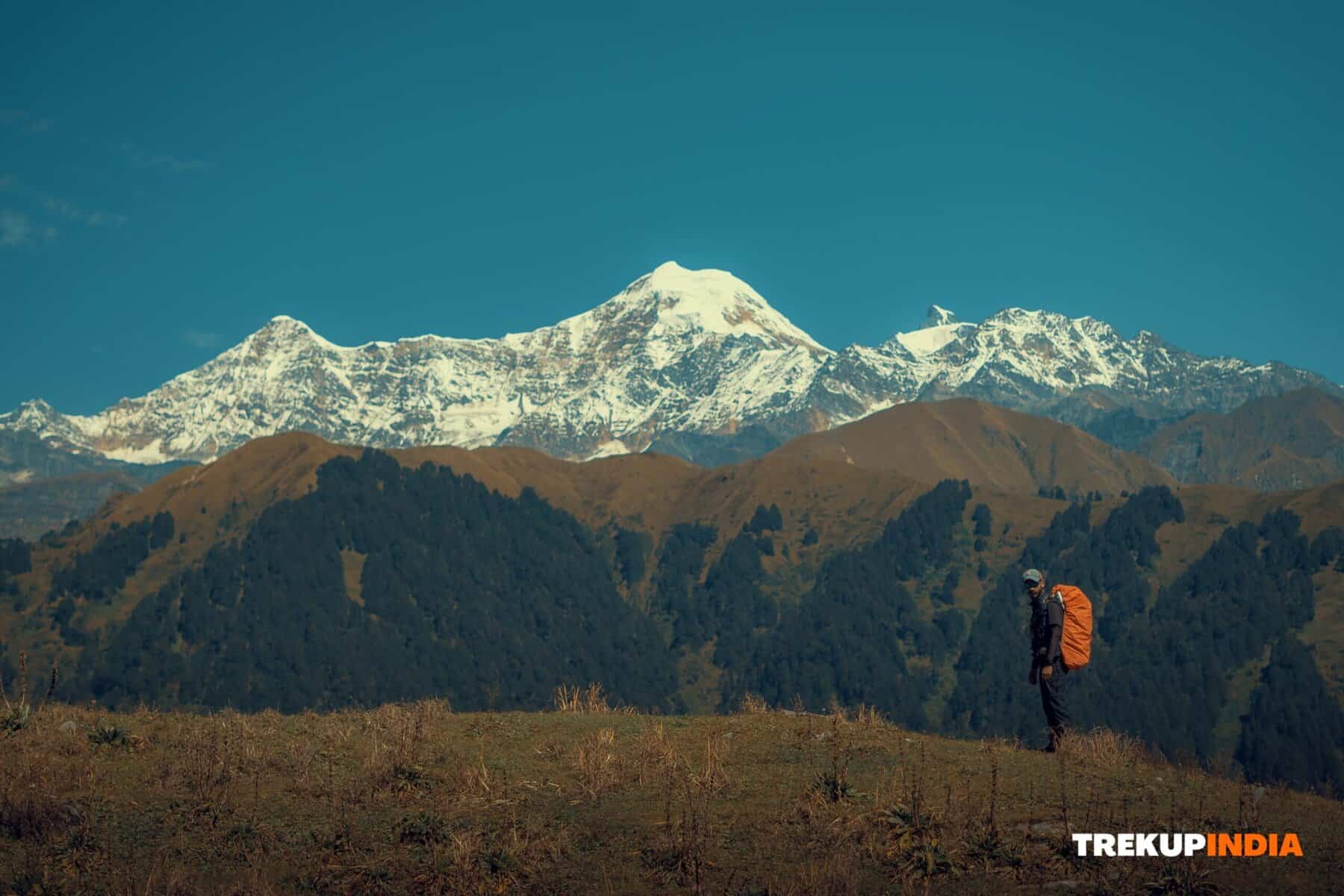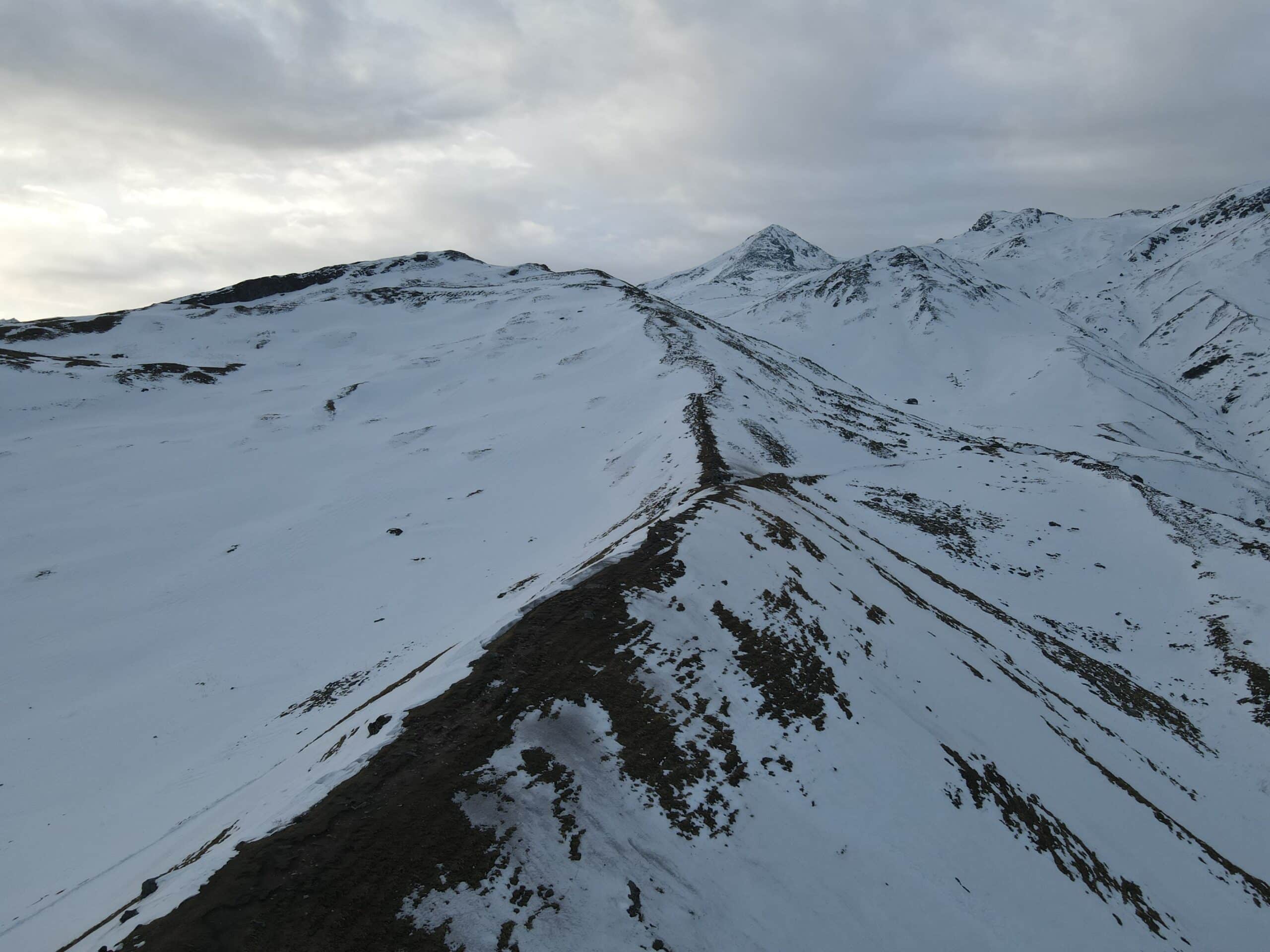Promoting knowledge about well-being while trekking in the Himalayas
Possessing a robust and fit physique when embarking on a Himalayan Trek is crucial. This cannot be overstated. Engaging in high-altitude trekking vastly differs from any other leisure activity, requiring considerable physical fitness. It would help if you divulged any medical conditions you may have to your adventure operator before embarking on a trek. We strongly advise our trekkers to take this matter seriously, as high altitudes can pose significant health risks that can not only adversely affect your well-being but also prove fatal. To comprehend this significance, it is essential to understand the effects of high altitudes on the human body.
1. What occurs within your body when you are at high altitudes?

Elevations exceeding 8000 ft are classified as high altitudes. Beyond this height, the atmospheric pressure decreases, and the oxygen content in the air diminishes. Consequently, when inhaling deeply at higher altitudes, oxygen is significantly lower than at sea level.
As you continue ascending, it requires several days for your body to adapt to the change in altitude. This is why you may have observed the inclusion of acclimatization days in our high-altitude treks, which typically span 6 to 8 days or longer.
When your body experiences a sudden decrease in oxygen, it instinctively attempts to compensate by accelerating your breathing rate. As a result, your heart pumps faster, and your pulse rate increases. Additionally, your bone marrow produces more red blood cells, making your blood thicker. This can potentially cause blood clots if you have preexisting heart conditions. Furthermore, you may notice decreased sleep quality at high altitudes, a normal part of acclimatization. However, consistently poor sleep can have negative effects on your body, especially if you have health conditions such as high blood pressure, diabetes, or heart problems.
2. What is the reason for not permitting individuals with high blood pressure to participate in the trek?
Individuals who have a preexisting condition of high blood pressure or unregulated hypertension are significantly more susceptible to experiencing strokes and heart attacks.
Your heart rate will increase significantly at higher elevations, and when combined with physical exertion, it can negatively impact your health. In colder temperatures, blood pressure rises as blood vessels constrict, requiring more pressure to push blood through the circulatory system. This can be particularly challenging for individuals who already experience high blood pressure, as the increased demand on the cardiovascular system can worsen their condition.
Furthermore, hypertension does not manifest any noticeable symptoms, making it even more dangerous. An individual may appear healthy and suddenly become ill. This is why we have a rigid policy against allowing individuals with high blood pressure to participate in treks. For blood pressure levels to be deemed stable, they should range between 100-130 (systolic) and 75-85 (diastolic) for at least one month before the trek. Following a strict diet and incorporating a daily exercise routine is essential. Although this may disappoint some trekkers, we have established these guidelines to prioritize the health and safety of all participants.
3. We prohibit individuals with heart conditions from participating in treks to ensure their safety and well-being.
Engaging in outdoor pursuits such as hiking, snowboarding, and biking at greater elevations can strain the cardiovascular system due to reduced oxygen levels and variations in air pressure, temperature, and humidity.
Individuals who have coronary artery disease, a condition distinguished by the narrowing of arteries that supply blood to the heart, may encounter symptoms such as breathing difficulties, light headedness, angina, and other discomforts due to the additional constriction of arteries at elevated altitudes, which subsequently restricts the circulation of blood to the heart.
The risk of sudden cardiac death is heightened at high altitudes, posing a significant threat to individuals with preexisting heart conditions. Without prompt medical intervention, such events can prove fatal within a matter of minutes, making it imperative to exercise caution and refrain from exposing those with heart conditions to high-altitude environments where emergency care may not be readily available.
4. What is the reason behind not permitting individuals with diabetes to participate in the treks?
During a trek at high altitudes, there is a greater use of energy, resulting in alterations to levels of carbohydrates and insulin. These changes can potentially lead to various complications.
Regularly and attentively checking your glucose levels and managing blood sugar levels are crucial for participating in the trek.
When planning high-altitude excursions, we prioritize the well-being of our participants by excluding individuals with certain health conditions that the altitude could exacerbate. These conditions include high blood pressure, heart conditions, diabetes, and epilepsy, as we want to minimize potential health risks and ensure a safe and enjoyable experience for all involved.
Upon joining our trekking excursion, all trekkers must furnish us with accurate details regarding their physical well-being and fitness level.
Before embarking on a hiking expedition, it is advisable to seek advice from your physician and commence with the trek upon receiving your doctor’s approval.
5. What is the reason for not permitting individuals with epilepsy to participate in The Trek?
Engaging in trekking can be physically demanding, potentially leading to insufficient rest and mild dehydration, which may increase the likelihood of experiencing an epileptic episode. Navigating steep and demanding terrain requires cautious steps. In remote mountainous areas, immediate access to medical facilities is limited, so as a precautionary measure, individuals with epilepsy are advised not to participate in treks unless a certified physician has approved them.
6. We regret to inform you that individuals with asthma are not eligible to Participate in our trek due to safety concerns.
Asthma is a medical condition resulting in the constriction of your air passages and excess mucus, leading to breathing difficulties and potentially triggering coughing. Engaging in strenuous physical activities, such as trekking, can also give rise to Exercise-induced bronchospasm (EIB).
Engaging in vigorous physical activity, particularly in cold weather conditions, can cause the muscles surrounding the bronchial tubes in the lungs to constrict, thereby reducing airflow and potentially triggering an asthma attack.
To ensure the well-being of all participants, we have decided not to permit individuals with asthma to join our trek, considering the potential risks and challenges that may arise.
7. What is the reason for not permitting overweight and obese people to participate in the trek?
Many individuals who lead a predominantly sedentary lifestyle, often characterized by a 9-to-5 desk job, tend to have a higher body mass index (BMI) than those who are more active. This can lead to difficulties when attempting to complete a hike or engage in physical activity, such as walking, at a pace that is deemed healthy and normal.
A high body mass index (BMI) can also increase your likelihood of developing acute mountain sickness (AMS). Physical activity requires three times more effort at high elevations than at sea level, and a high BMI means your body needs to consume more oxygen to compensate. This increased oxygen consumption can make you more susceptible to AMS.
Individuals with a higher BMI are at a greater risk of getting injured, particularly when descending from a trek. Overweight people are more likely to experience ankle and knee injuries. However, it is still possible for those with a higher BMI to participate in treks. By establishing and committing to a solid fitness regimen, you can decrease your BMI and become eligible for the trek.
8. The optimal BMI range is between 18.5 and 29.
We welcome participants with a body mass index (BMI) ranging from 18.5 to 29 and a waist measurement of 36 inches or less for men and 33 inches or less for women. If your BMI exceeds 29 or your waist size exceeds the specified limit, you’ll need to consult with our trek expert to ensure your safety and comfort during the trek.
Why TrekupIndia?
Since 1993
- Trekup India has been one of the most recommended partners for trekking adventure tourism for more than 29 years. Featuring more than 75 Himalayan treks makes us supreme in the domain.
- We have explored trails like Kedarkantha Trek, Rupin Pass Trek, Borasu pass, Bali Pass, etc.
- Trekup India is India’s Oldest, Safest And direct operation trekking organisation. Trekup India has more trekkers than any other organization. 15,000 plus for 2022
We Are Approved And Certified By :-
- Adventure Tour Operators Association of India (ATOAI)
- Indian Mountaineering Foundation (IMF)
- State Tourism Department
What We Do?
- Trekup India is the most trusted trekking company in India. We also sets safety standards for the entire trekking industry.
- Trekup India is the pioneer of trekking in India. Trekup India has brought most trekking routes, trekking systems and trekking equipment to India for Indian trekking.
Save The Trail
- Trekup India’s Save The Trails program is a favorite among trekkers. Our Save The Trails program has made trails, where Trekup India runs trekking, pristine. Save The Trails is a great way for trekkers to leave our mountains better that we found them.
- Trekup India is a unique trekking company that offers the Trekup India’s Trekkers best experience. These transformative experiences are well-designed and leave an indelible impression on trekkers. These have been around for 29 years.






